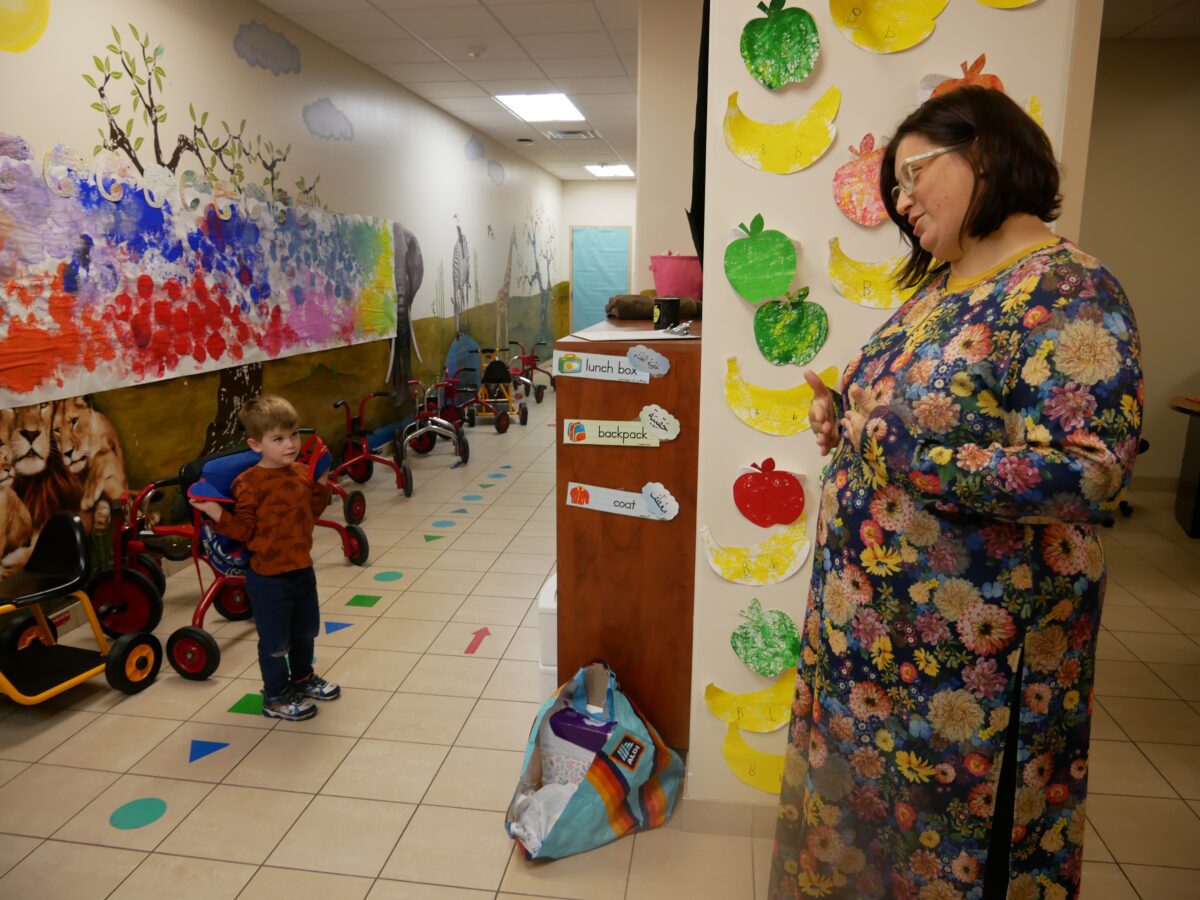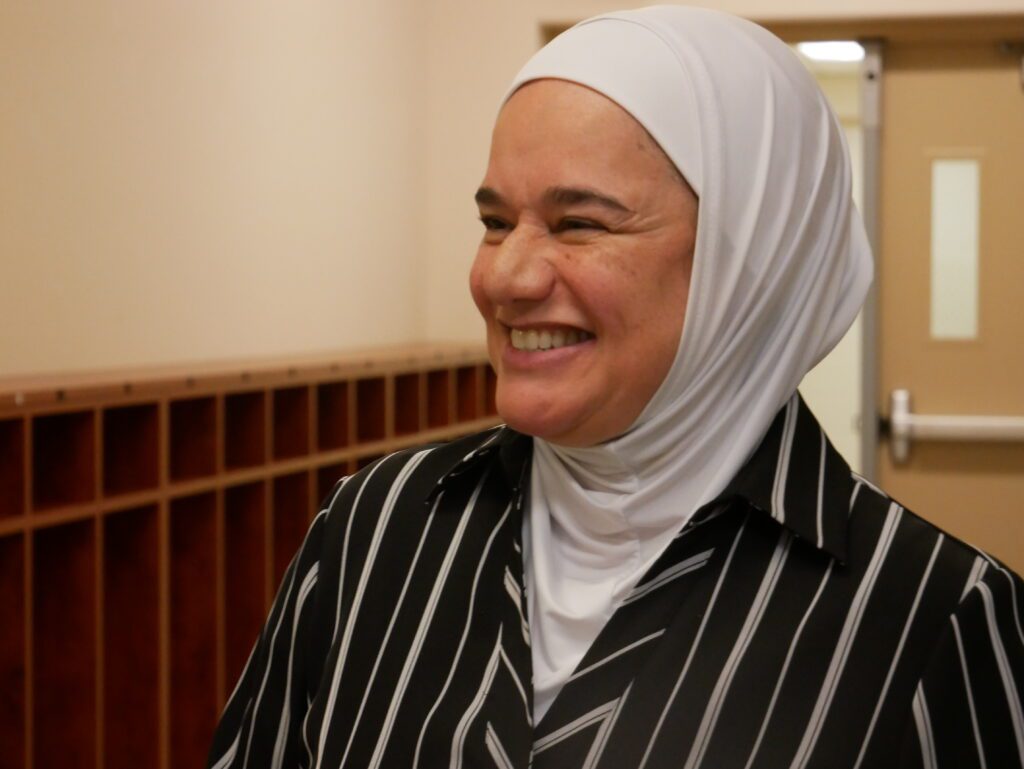
|
|
Editor’s Note: Katie Dukes contributed reporting.
North Carolina soon will launch a pilot at three local Smart Start partnerships based on a Michigan program that splits the cost of child care between businesses, employees, and state government. The program is meant to help more working parents get the child care they need.
“Even if you can help a handful of children — 100 more children or 25 more children or whatever the number may be — you still have a tremendous impact on families,” said Marta Hester, public policy director at the North Carolina Partnership for Children (NCPC), which will implement the program along with its local partnerships. “To get that buy-in from the businesses says a lot about the direction that the state is going in.”
The state budget includes $900,000 in each of the next two years to try the model and report back on what works and what doesn’t. The Division of Child Development and Early Education (DCDEE) and NCPC are responsible for choosing the three partnerships.
EdNC visited Michigan last week to learn about that state’s program, MI Tri-Share, which was launched by the state Women’s Commission in 2021 as a pilot and now operates in 59 of the state’s 83 counties, with plans to expand statewide over the next five years.
Here’s the advice state and local-level leaders in Michigan had for those implementing the program, and for those considering participating:
1. It’s a retention tool for businesses — and a big deal for parents.
Not having to worry about two-thirds of the cost of child care — which often exceeds the cost of college tuition — is a big selling point for employees with young children, participants said.
Cherie Parks, director of human resources at Goyette Mechanical, a participating business in Flint, said paying a third of the cost is worth it for the business because employees stay when their needs are met.
“Everything else being equal, I guarantee you if somebody’s helping to pay for your child care, you’re not going to leave,” Parks said.
And the cost of employee turnover is higher than the cost of one-third of child care, which is about $3,000 annually, said Annette Sobocinski, executive director of the Child Care Network in Flint, one of the regional facilitator hubs.
“This really does save employers in turnover costs,” Sobocinski said. “When you’re talking to employers, feature that.”
Sobocinski said that of the hub’s 23 participating employers, two-thirds are child care providers themselves, which underscores the fact that even small businesses with thin profit margins are choosing to participate.

Joanna Shannon, a kindergarten teacher at Genesee Academy, a private Islamic school serving children from preschool to high school, said she would not have been able to keep teaching without the program, which helps her afford care for her 4-year-old twins.
“I was going to have to find a way to stay at home,” Shannon said. “It really has been a huge help.”
Michigan’s program targets employees at 200% to 325% of the federal poverty line. North Carolina’s pilot sets that eligibility window a bit lower, at 185% to 300% of the federal poverty line. For a family of four, that’s an annual income of $55,500 to $90,000.
2. Implementation is complex. Local leaders need support and funding.
Michigan’s program is administered by regional hubs. The state caps the funding the hubs can use to administer the program at 8%. North Carolina’s budget caps administrative uses at 9%.
Administration means coordinating the funds among the three entities to pay child care programs; recruiting businesses and helping them market the program; determining employees’ eligibility; and connecting families with providers.

The funds don’t cover the cost, the staff of the Child Care Network told EdNC. They have blended other sources of funding to hire a new full-time position, 70% of whose job is devoted to the program. Even then, the hub has had to charge administrative fees to participants to make up the cost.
“The administrative fee charged is not an ideal solution, and my preference would be that the state covered a higher percent of admin costs, so that cost was not passed on to participants,” Sobocinski said in an email.
The state of Michigan is hoping to contract with a statewide entity to take some of the administrative burdens from local hubs, said Cheryl Bergman, CEO of the Women’s Commission. In North Carolina, NCPC can play this role, president Amy Cubbage told EdNC, while local partnerships do the ground-level work.
“I’m excited that we’ll be able to bring a different approach — a more comprehensive services approach — and provide more of that backbone administrative support,” Cubbage said.
As Michigan looks to expand so that everyone who is eligible can participate, more funding will be needed, said Lisa Brewer-Walraven, director of the Division of Child Development and Care.
“Scaling is going to be expensive, because it’s only a $2-3 million investment right now, so it limits the number (of participants) the state can pay for because we’re supporting the hubs and we’re supporting the third,” Brewer-Walraven said. “There’s lots of conversation about: How do we really make it be meaningful and take it to scale?”
Michigan is aiming to serve 675 households next year, which it projects will cost $6 million, and 7,500 households by 2028, which will increase the cost to $39.6 million.
4. It’s one piece of the puzzle.
The program is targeted and will not fix some of the core issues of child care — access and affordability for other families, child care availability, and low compensation for teachers.
The hub leaders told us there are other regions that have fewer providers and can’t disperse funds as effectively.
In North Carolina, Cubbage echoed that sentiment.
“You have to have the capacity,” she said. “You have to have the centers open and available.”
That’s not a given, she said. With federal relief funds running out next summer and no state funds to replace them in the budget, many providers are unsure how long they can stay in business.
Cubbage said they’ll keep pushing for more state funding, and plan to connect child care programs who participate in the Tri-Share model with other resources.
“It is just critically important that we continue to advocate for those supports for the workforce, for getting programs in place … to really bring more folks into the early childhood workforce and then make sure that those jobs are providing a living wage and allowing people to care for their own families — and really provide the kind of care that is so important for early childhood development,” she said.
What’s next?
In the coming weeks, NCPC and DCDEE will begin the selection process for the three participating partnerships.
The budget requires these partnerships to be geographically diverse and include one county designated Tier 1, or economically disadvantaged, by the state Department of Commerce.
Sign up for Early Bird below for updates on the pilot and lessons from other states’ early childhood approaches to policy and investment.





